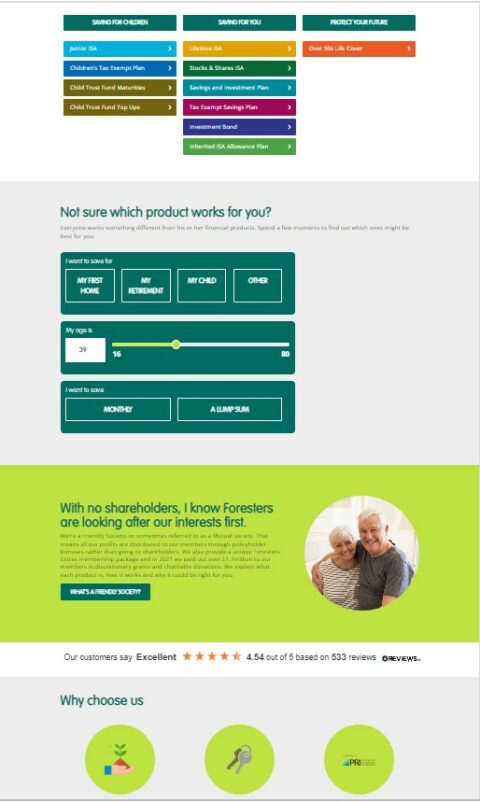Pillar pages have been an effective way to group and present website content to users and search engines for some time.
In this post, I will define what a pillar page is, how it can help your SEO efforts, and share some examples of pillar pages in action.
So let’s start by defining pillar pages.
What Is A Pillar Page?
A pillar page is a landing destination on your website that focuses on a key topic, resource, product, or service area.
It enables users and search engines to access lots of topically relevant content, quickly.
The depth of pillar pages will vary based on their purpose.
Some may be more of a shallow introduction to get fast access to other content (a little like the role of a contents page), whilst others will be more comprehensive, giving deeper standalone value, supported by related content items.
If you listed down all of the core topics related to your business, each of these could logically warrant becoming a pillar page.
Pillar pages give people single-stop access to a host of related content in a user-friendly way.
They also provide search engines with logically organized content that can be quickly crawled, understood, and therefore ranked effectively in search.
You may have heard of cornerstone content, content hubs, content clusters, or pillar pages in various forums, and effectively, they all represent nuances of the same approach.
If you visualize a wheel of a bicycle, at the center, you have the hub.
From the hub, you have lots of spokes.
In the case of pillar content, the hub is the pillar page (the central theme or topic), and the spokes are the related content areas pointing to and from the pillar page.
A single pillar page may have many pages and other content types all linking to the pillar page, either directly, or via other sub-topics that then link back to the main/pillar page.
The fundamental interaction remains the same – centralizing all related topical content from one main landing destination (the pillar page).
I’ll provide some examples shortly to help reinforce this principle so you can visualize pillar pages in action.
How Can Pillar Pages Help Your SEO?
Before moving on to some examples of pillar pages, it’s useful to understand a little more about how they can help your SEO performance.
There are many benefits to creating pillar pages on your website, and I cover a few of these next.
Strengthening Topical Authority Signals
Expertise, Authoritativeness, and Trustworthiness (E-A-T) underpin Google guidelines and provide a key factor for assigning overall quality scores to any website.
Put simply, Google uses E-A-T as a yardstick to decide if the content is considered of high quality – and if it is, it will likely rank consistently higher.
This is because it will be deemed:
- Helpful and useful to people.
- Created by demonstrable experts in the topic area.
- Placed on a relevant site that has the necessary authority signals.
- Showcase positive user experiences and expected trust signals.
- Provides comprehensive topical coverage expected to fully satisfy the user’s search need.
By grouping content together in a simple hierarchy, you are making it easy for search engines to identify, understand, and rank your content.
Your topical signals are clearly being provided to help broader Google guidelines such as E-A-T.
This means that you can shine a light on the areas you want your business to be closely related to online, and make ranking for those topics more consistent and optimized.
By contrast, consider a website where the bulk of the content is all competing against itself.
Where there is no clear segmentation or hierarchy of topics (or pillars) and every time you add a new blog post, or article to your website, the amount of noise for search engines and users increases.
You can quickly see why pillar pages add value.
Here, you can find out more about E-A-T and why it matters.
Faster, Simpler, More Complete User Experience
For many years, Google has been increasing the impact of a positive user experience for SEO gains.
Core Web Vitals (CWVs) are a more recent manifestation of this.
Another example of this in action is the devaluing of websites and content that puts in place barriers between the user, and their intended destination such as interstitials, or sites with perceived thin-value content.
Site speed and mobile-friendliness as ranking factors are other examples.
Through the use of pillar pages, you are able to land people at the heart of the topic they are interested in.
You can provide clear trust signals through comprehensive, more meaningful content delivery.
You can showcase your experts through the content they are associated with and house it in a central resource.
You can enhance user engagement signals by simplifying access to related content, and encouraging them to move through the information-seeking and buying cycle sooner.
On top of this, as you are focusing your resources on specific, main destination pages, you can ensure they are quick to load, intuitive to interact with, and simple to navigate.
You also simplify the ongoing, iterative changes you make to keep improving them through new data sets.
Here, you can find out more details on improving SEO with user experience.
Natural, Value-Based, Link Building
When providing a one-stop-shop for people to solve a myriad of related questions, wants, needs, and pain points, in a simple way, you can naturally gather external trust signals including links.
Think about all of the repeated social listening opportunities to share your comprehensive pillar pages with your audience.
With your pillar pages you are supplying, free, easy-to-access, share and promote content resources, perfect for link acquisition, brand building, and PR.
Added SEO Benefits Of Pillar Pages
There are many additional SEO benefits to using pillar pages, but typically this would include:
- Identifying content gaps (and filling them) more consistently to appear for broader volumes of search terms.
- Improving the internal structure of your site and the related link signals (and value) pointing to key content pillars.
- Associating your brand and experts to dominant commercial topics that are likely to support conversions and traffic from SEO.
- Reducing bounce rates and improving other metrics such as time on page/site, and other content quality signals.
Examples Of Different Pillar Pages
Pillar pages have many different applications and to finish this article, I thought it would be useful to share some here.
Product Pillar Page
This example segment from Foresters Friendly Society demonstrates how a single pillar page can provide:
- Trust signals through 3rd party reviews.
- Single topic content page and access to dominant user themes.
- Interactive content to support trust signals and value.
- Wider brand signals.
 Image from Foresters Friendly Society, December 2022
Image from Foresters Friendly Society, December 2022
Topic Pillar Page
In these example snippets from the University of East Anglia (UEA) life at campus landing destination, you can see how a single pillar page gives the user and search engines:
- Fast access to core content for a simpler user journey.
- Distilled and visual content highlights for quick content digestion.
- Mobile-friendly content segments for on-the-go fact-finding.
- Topical content sign-posting to keep the user learning without having to search for information.
- Storification to help the association between the user and the brand.
 Image from University of East Anglia, December 2022
Image from University of East Anglia, December 2022
 Image from University of East Anglia, December 2022
Image from University of East Anglia, December 2022
 Image from University of East Anglia, December 2022
Image from University of East Anglia, December 2022
Conclusion
Pillar pages aren’t just an effective way to organize your website’s content, they can also have significant benefits to your SEO.
By leveraging pillar pages, you can create a faster, more streamlined, and generally more user-friendly experience on your website – making it easier for both users and search engines to interact with it.
If you want to boost your SEO efforts today, put pillar pages to use!
More resources:
Featured Image: oatawa/Shutterstock
